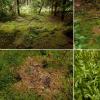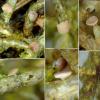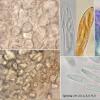
15-12-2025 15:48
 Danny Newman
Danny Newman
Melanospora cf. lagenaria on old, rotting, fallen

15-12-2025 15:54
 Johan Boonefaes
Johan Boonefaes
Unknown anamorph found on the ground in coastal sa

15-12-2025 21:11
 Hardware Tony
Hardware Tony
Small clavate hairs, negative croziers and IKI bb

15-12-2025 07:09
 Danny Newman
Danny Newman
indet. Rutstroemiaceae sp. on unk. fallen leavesMc

15-12-2025 07:05
 Danny Newman
Danny Newman
Pseudosclerococcum golindoi (det: Zotto)near Cosb

15-12-2025 11:49
 Danny Newman
Danny Newman
ITS sequences from the following two collections B

15-12-2025 12:34
 Danny Newman
Danny Newman
indet. Rhytismataceae on oak leafnear Purchase Roa

09-12-2025 12:06
 Andgelo Mombert
Andgelo Mombert
Bonjour,Je recherche l'article concernant Hypobryo

Bonjour,
Je me souviens de la phrase : Namen sind halt Schall und Rauch répondant à la question d'Elisabeth dans http://www.ascofrance.fr/search_forum/55278 ...
Voici une nouvelle récolte de cette belle espèce , sur la mousse déterminée par Christian Hurtado comme Pleuroscleropodium purum.
Asques 80-1000 x 9-10 , H-, IKI R, Calycina-type. Spores 17-20 (23) x 3,5-4 Paraphyses x 3-4,5 with round VBs inly conspicuous in CRB, often forked. Extal globulosa , crystals ++.
I agree with a placement outside Bryoscyphus , including for morphological reasons . I did not clearly understand from former discussions on Ascofrance whether sequences have benn actually compared with Arachno scypha/peziza species.
Amitiés
Michel



